Orchid flowers hold more than aesthetic appeal, carrying deep meanings and cultural significance throughout history.
From their botanical origins to their symbolic representations, orchids have woven a tapestry of intrigue and fascination.
In this article, we will delve into the captivating world of orchids, decoding their name, exploring their rich symbolism, and uncovering their practical uses.
How did the orchids get their name?
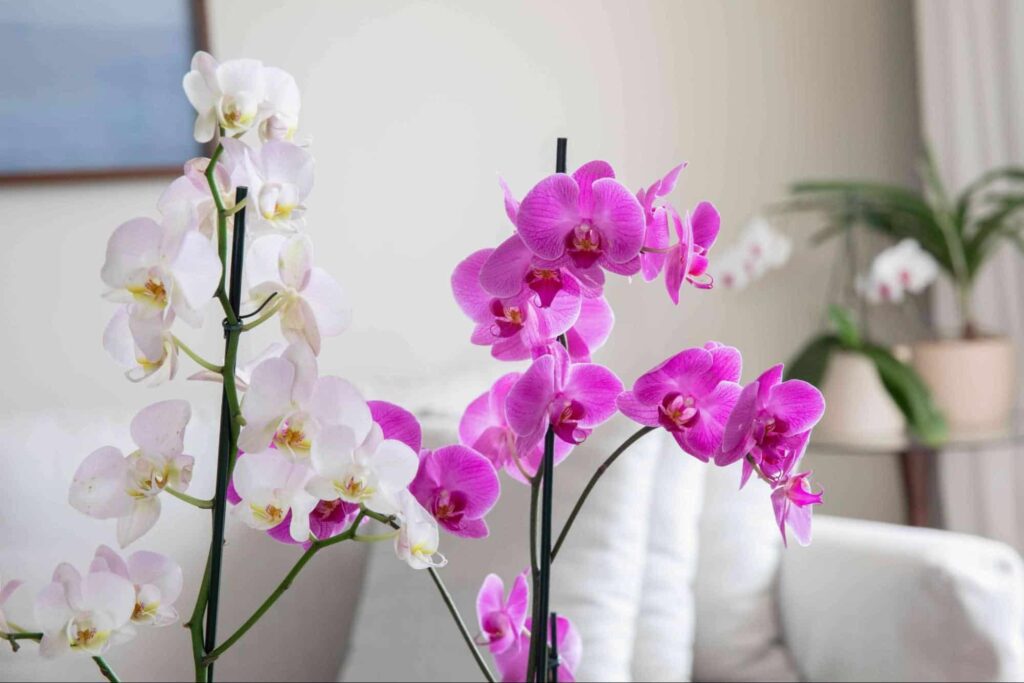

The etymology of “orchid” is rooted in ancient Greece, derived from the word “orkhis,” which translates to “testicle.” The name was chosen due to the resemblance of the plant’s tuberous roots to the shape of testicles.
This association with the male reproductive organ led to the belief among the ancient Greeks that orchids possessed aphrodisiac properties.
What are the botanical origins of orchids?
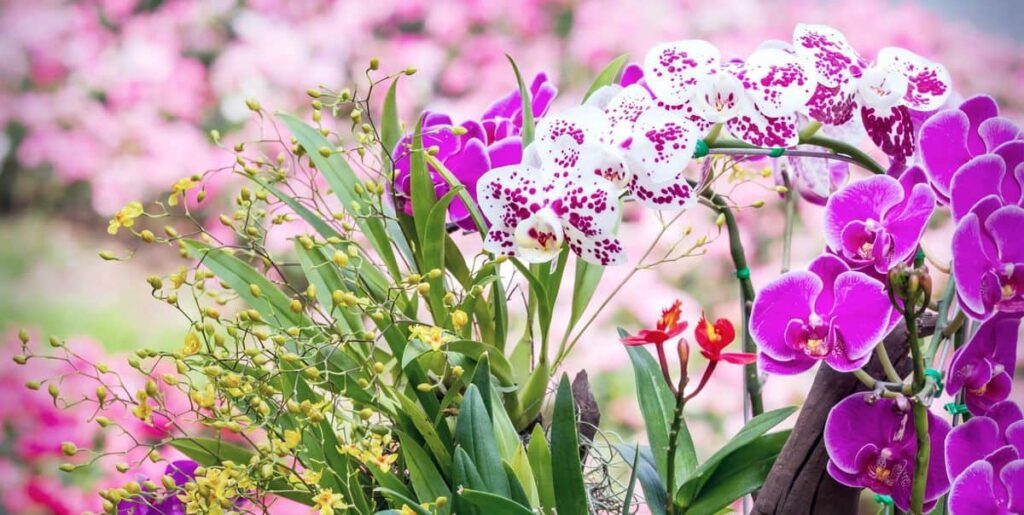

Orchids belong to the family Orchidaceae, which is one of the largest and most diverse plant families on Earth. They can be found in various ecosystems across the globe, from rainforests to deserts and even high mountainous regions.
With approximately 28,000 recognized species and countless hybrids, orchids showcase an extraordinary range of shapes, sizes, and colors.
When and where do orchids grow?
Orchids have adapted to thrive in diverse habitats, thanks to their unique biological characteristics.
They can be found on every continent except for Antarctica, displaying a remarkable ability to adapt to different climates and growing conditions.
Some species, such as the tropical orchids, flourish in warm and humid environments, while others, like the terrestrial orchids, prefer well-drained soil in cooler regions.
Do orchids require a lot of maintenance?
Contrary to popular belief, orchids don’t demand excessive care. While they may require some specific conditions, they can be relatively low-maintenance plants.
Providing proper watering, adequate light, and the right temperature range will help them thrive.
Do orchids need shade or sun?
The light requirements of orchids vary depending on the species. Most orchids prefer bright, indirect light, such as that filtered through a sheer curtain or provided by an east-facing window.
However, intense, direct sunlight can scorch their delicate foliage. It’s crucial to strike a balance by offering sufficient light without subjecting them to extreme heat.
Where do orchids bloom?
Orchids can bloom in a wide array of settings, including indoor environments and outdoor gardens. Many enthusiasts grow orchids indoors, taking advantage of their ability to thrive in pots or hanging baskets.
Additionally, some species can be successfully cultivated in greenhouses, allowing for precise control of temperature, humidity, and light conditions.
In their natural habitats, orchids grace the landscapes of forests, mountainsides, and even swamps with their breathtaking blooms.
When do orchids bloom?
The blooming season of orchids can vary greatly depending on the species and their growing conditions. While some orchids may bloom only once a year, others can produce flowers multiple times annually.
Proper care, including providing the right temperature, humidity, and light levels, can encourage orchids to bloom at their designated time. It’s essential to research the specific needs of each orchid variety to maximize their blooming potential.
What kind of soil do orchids prefer?
Orchids have unique soil requirements that differ from conventional garden plants. Most orchids are epiphytes, meaning they grow on other plants or objects instead of directly in the ground.
As a result, they require a well-draining medium that allows air to reach their roots.
Specially formulated orchid potting mixes, often consisting of bark, moss, or coconut coir, provide the ideal growing medium for these remarkable plants.
When is the best time to plant orchid seeds?
Growing orchids from seeds can be a rewarding but challenging endeavor. Orchid seeds are incredibly tiny, almost like dust particles, and lack stored nutrients.
Therefore, they rely on a symbiotic relationship with fungi in the soil to obtain the necessary nutrients for germination and growth.
The best time to plant orchid seeds is typically in spring or early summer when conditions are warm and humid, mimicking their natural growing environment.
What do orchids mean?
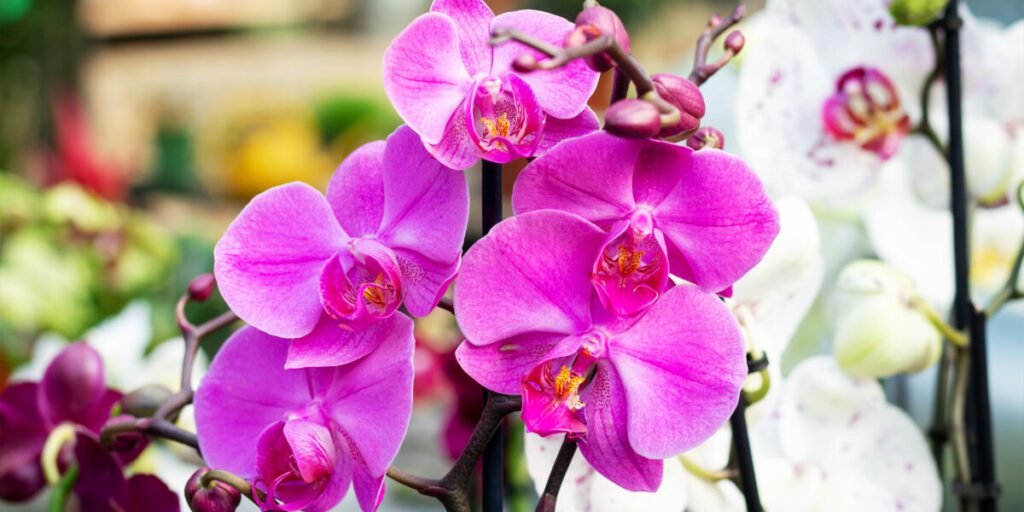

Orchids hold rich symbolic meanings across cultures and traditions.
They are often associated with love, beauty, elegance, and rare qualities. Orchids also represent refinement, grace, and the pursuit of perfection.
What do the colors and symbolisms of orchids mean?
Pink Orchids
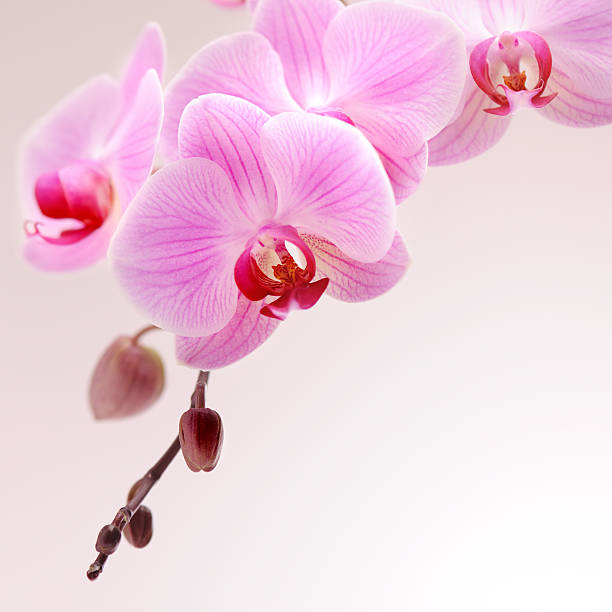

Pink orchids symbolize grace, femininity, and innocence. They’re perfect for expressing joy, happiness, and admiration towards someone.
Recommended use: Pink orchids make delightful gifts to show appreciation, celebrate achievements, or convey affection. They are ideal for birthdays, anniversaries, or as tokens of friendship.
Purple Orchids
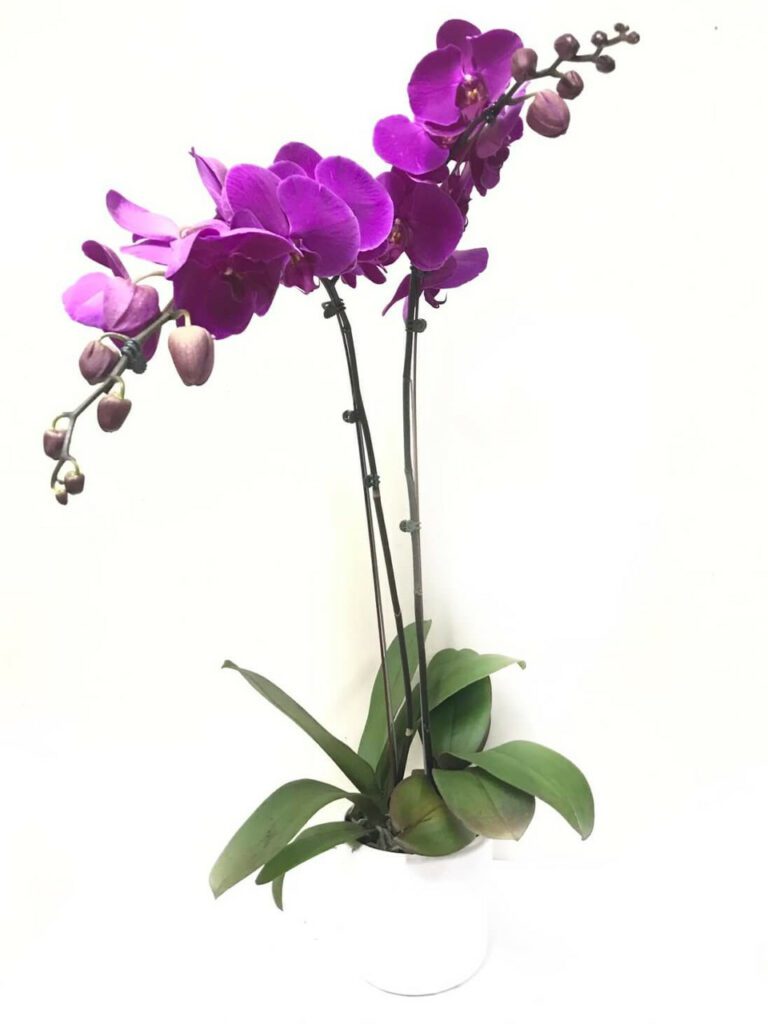

Purple orchids embody royalty, luxury, and elegance. They represent deep admiration, respect, and dignity.
Recommended use: Purple orchids make sophisticated gifts for honoring someone’s accomplishments, expressing profound admiration, or acknowledging their significance in your life.
They’re suitable for special occasions such as graduations, promotions, and professional achievements or for conveying a sense of regality.
White Orchids
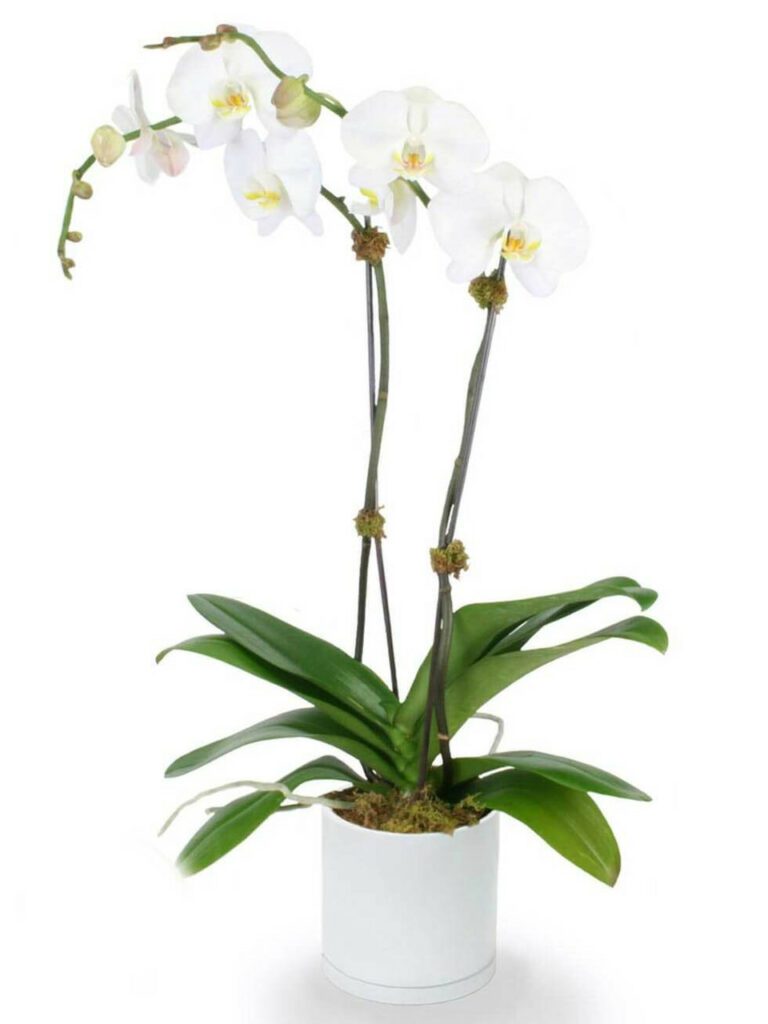

White orchids represent purity, innocence, and spirituality. They symbolize new beginnings and a sense of reverence.
Recommended use: White orchids are commonly chosen for weddings, as they epitomize the purity of love and the sanctity of union.
They’re also suitable for religious ceremonies, as sympathy flowers, or for offering support during times of transition.
Yellow Orchids
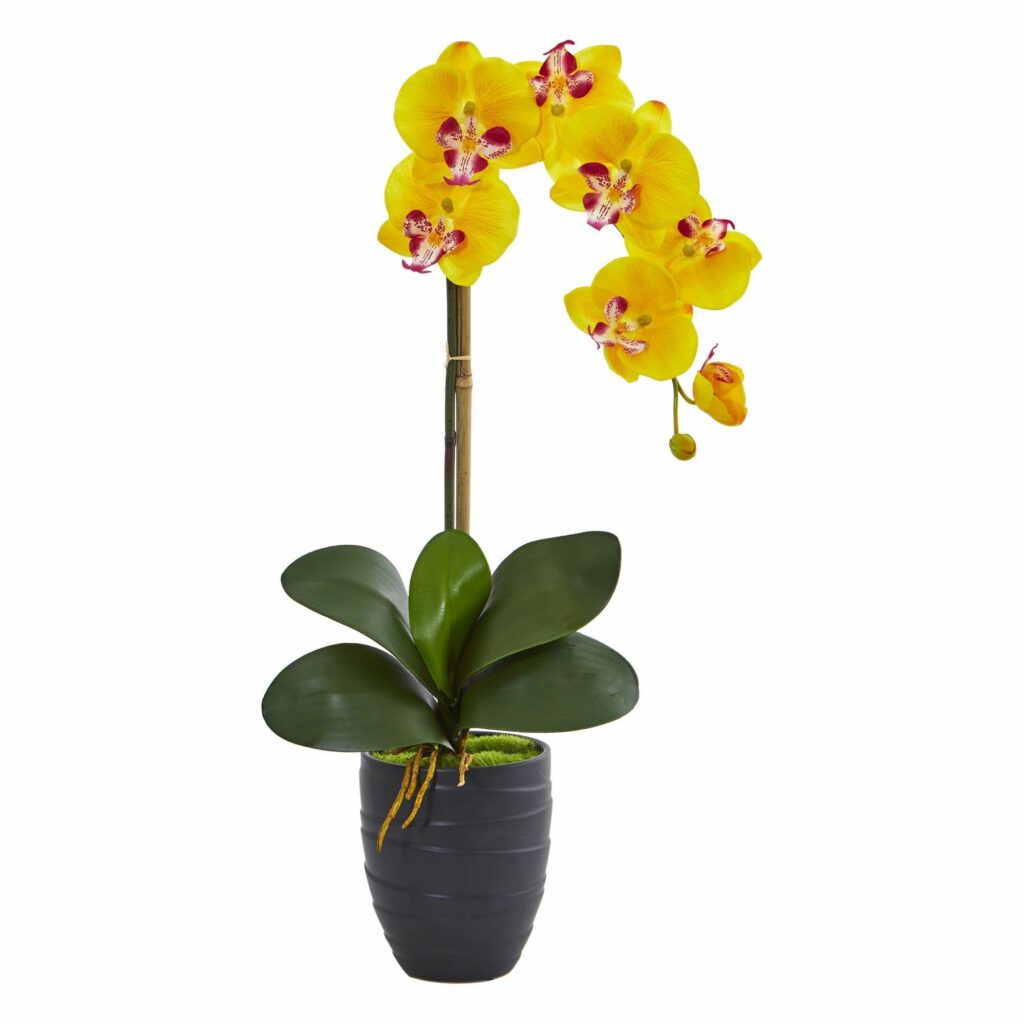

Yellow orchids symbolize friendship, joy, and optimism. They evoke feelings of happiness, warmth, and positive energy.
Recommended use: Yellow orchids are wonderful gifts for celebrating friendships, expressing appreciation, or uplifting someone’s spirits.
They are ideal for birthdays, achievements, or when wishing someone success and happiness in new endeavors.
Red Orchids


Red orchids symbolize passionate love, desire, and strength. They convey intense emotions and romantic love.
Recommended use: Red orchids make bold and passionate gifts for Valentine’s Day and anniversaries or for expressing deep affection and admiration towards a loved one.
Orange Orchids
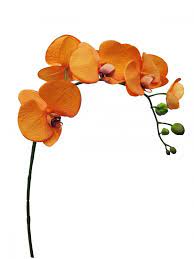

Orange orchids symbolize enthusiasm, creativity, and energy. They represent boldness, excitement, and adventure.
Recommended use: Orange orchids make vibrant gifts for celebrating achievements, inspiring creativity, or encouraging someone embarking on a new journey.
They’re fitting for graduations and promotions or for boosting someone’s morale.
Blue Orchids
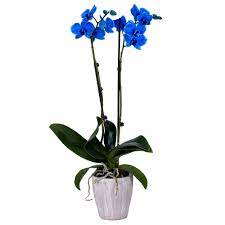

Blue orchids are rare and evoke a sense of tranquility, peace, and serenity. They symbolize calmness and harmony.
Recommended use: Blue orchids make thoughtful gifts for those seeking moments of introspection, meditation, or a reminder to find serenity amidst life’s challenges.
They’re suitable for birthdays and occasions of reflection or as tokens of support during stressful times.
What did orchids symbolize in various historical periods?


What are the cultural associations of orchids?


What are the spiritual or religious meanings of orchids?


What are the uses of orchids?
Beyond their aesthetic appeal and symbolic meanings, orchids have practical applications in medicinal remedies and gardening.
Can orchids be used for medicinal purposes?
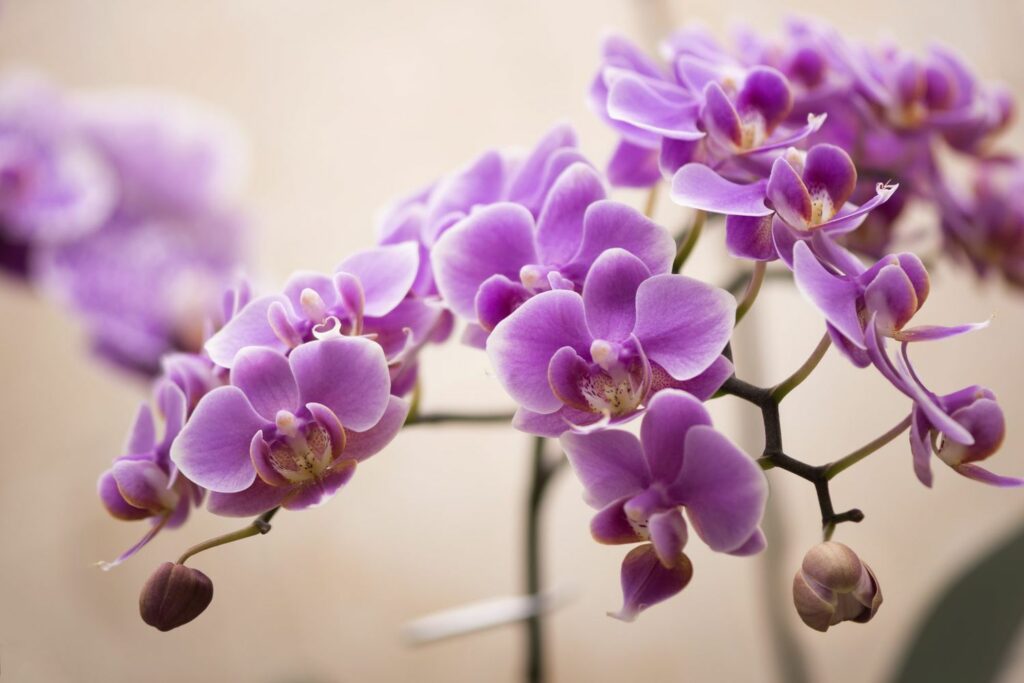

Orchids have been valued for their medicinal properties in various cultures. Traditional Chinese medicine, for instance, employs certain orchid species to treat ailments such as coughs, lung infections, and inflammation.
Additionally, some orchids are known for their antioxidant properties and are utilized in herbal remedies and dietary supplements.
It’s important to remember that although violets have been traditionally used for medicine, it’s always best to consult with a healthcare professional for proper guidance and advice.
How can orchids be used in gardening and landscaping?
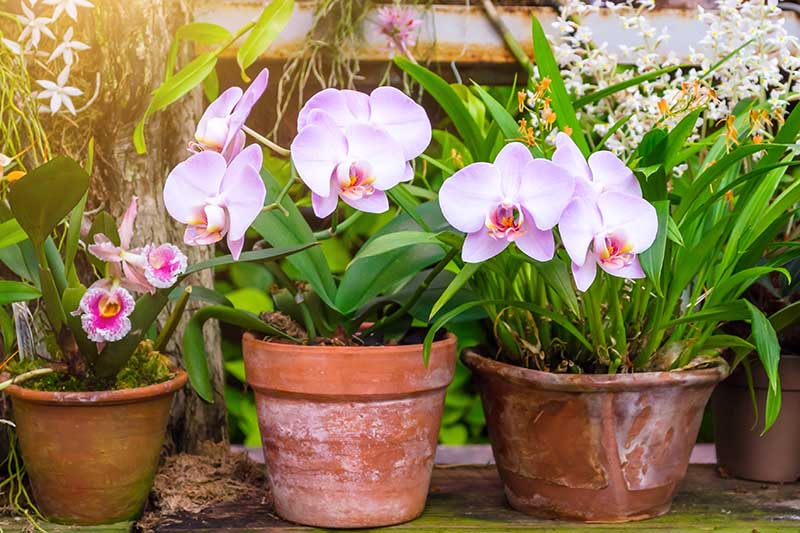

Orchids offer endless possibilities for enhancing gardens and landscapes with their unique beauty. They can be cultivated in pots, hanging baskets, or mounted on trees and provide stunning displays of color and form.
Many gardeners and landscapers incorporate orchids into their designs to create focal points, add a touch of elegance, or build on a tropical theme.
With their vast range of colors and shapes, orchids lend themselves well to artistic and imaginative landscaping projects.



